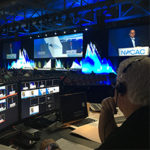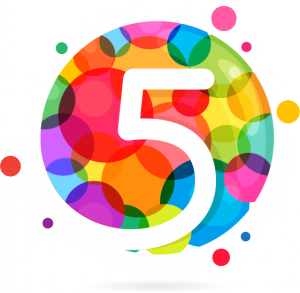 At Convene, we’ve made it a year-end tradition to ask ourselves this question: What’s the one meeting trend we’ll be keeping an eye on next year?
At Convene, we’ve made it a year-end tradition to ask ourselves this question: What’s the one meeting trend we’ll be keeping an eye on next year?
Read on to find out why we expect more diversity in business-event speakers, why we think relationships will be key to improved event security, and why we are following the rise of artificial intelligence and cognitive-enhancing drugs. And finally, will the wellness trend translate to a more relaxed and personal standard for dress at events?
Diversifying the Stage
David McMillin, Editor
In the face of all the chatter about AR, VR, and the rest of the tech acronyms that have the potential to reinvent the event on-site experience, event organizers will get back to basics to reevaluate something that doesn’t require a headset or data collection: the names on the program.
In 2018, I expect to see speaker lineups at conferences and conventions feature a range of voices outside the old-school white male CEO mold. Consider the recent efforts to diversify two of the biggest entertainment events — the Oscars and the Grammys. After two consecutive years of failing to nominate a single black actor and facing a well-deserved #OscarsSoWhite social backlash, the 2017 edition’s slate of nominees was arguably the most diverse in the award program’s nearly 90-year history. When the Grammy Awards are distributed in 2018, there will be no white men called to the stage for Album of the Year.
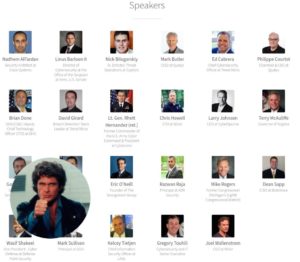
The business-events industry has some catching up to do, and attendees are taking notice of the names and faces on the programs. Consider CES — one of the best-recognized names in trade shows — where the main stage has been dominated by men. After facing a public call to add women leaders to the agenda, Karen Chupka, senior vice president, CES & corporate business strategy of the Consumer Technology Association, issued a lengthy response pointing to a lack of women with business cards that include the titles president or CEO. “As upsetting as it is, there is a limited pool when it comes to women in these positions,” Chupka wrote. “We feel your pain. It bothers us, too. The tech industry and every industry must do better.”
The face-to-face industry is the first in line of industries with a real opportunity to do better and lead the charge toward progress and equality, with agendas that hand the microphone to a diverse cast of voices from every corner of the world. Event organizers possess a tremendous amount of power in the ability to determine who qualifies as a “subject matter expert.” In 2018, I’ll be looking to hear many new voices.
AI Gets Real
Barbara Palmer, Senior Editor, Director of Digital Content
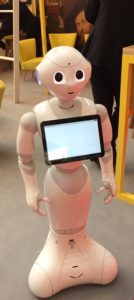 The science-fiction movie classic 2001: A Space Odyssey turns 50 in 2018, which means that we’ve been thinking about — and fearing — artificial intelligence for a very long time. But 2017 was the year that many of the things that seemed like science fiction just a few short years ago became reality.
The science-fiction movie classic 2001: A Space Odyssey turns 50 in 2018, which means that we’ve been thinking about — and fearing — artificial intelligence for a very long time. But 2017 was the year that many of the things that seemed like science fiction just a few short years ago became reality.
As I worked on our January cover story on medical meetings, I took a deep dive into how AI is expected to disrupt health care over the coming years. I was both electrified and a little stunned by what I learned — who knew that nearly half of the hospitals in Rwanda receive medical supplies by drone? In October, computer scientists announced that they had developed algorithms that can outperform humans in diagnosing pneumonia and the Federal Drug Administration approved a digital pill that can send a message to a smartphone after you take it.
What will it mean for business events? For starters, I expect applications that use AI, like personalization and chatbots, to become even more useful and powerful. And that we will have new ways to extract meaning from all of the data that we collect. Cisco recently announced the launch of a meeting assistant that eventually will use AI to analyze and summarize the written and spoken discussion during virtual work meetings and suggest action items. Could that technology be used to analyze spoken and written conversations in face-to-face and hybrid meetings and identify solutions and areas for more follow-up?
The big worry has always been that AI could create robots that would render us obsolete or, worse, become our overlords. But as the applications of AI began to come into focus, its promise is not so much to take over our work, but to help us do our work better. We need to keep asking questions about how to keep technology human-centered — as someone who would much rather talk over a cup of coffee than by text or email, I’m glad to be working in an industry that understands better than most the value of human interaction.
Better Crisis Preparedness
Casey Gale, Associate Editor
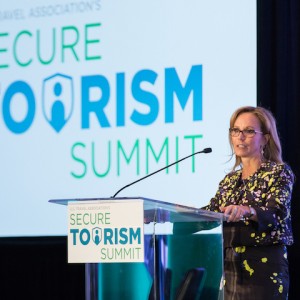 When I joined the Convene team in April, the first event I covered — two weeks into my new position — was the U.S. Travel Association’s Secure Tourism Summit. At the event, representatives from convention centers, law enforcement, security analytics, and government emphasized how important it is for event organizers to consider emergency preparedness when planning a meeting.
When I joined the Convene team in April, the first event I covered — two weeks into my new position — was the U.S. Travel Association’s Secure Tourism Summit. At the event, representatives from convention centers, law enforcement, security analytics, and government emphasized how important it is for event organizers to consider emergency preparedness when planning a meeting.
Since then, I have asked a number of event organizers if their team readies an emergency plan before an event. Many admit they are not as prepared as they would like to be, and perhaps do not even know how to begin tackling such a serious subject. But the Secure Tourism Summit taught me my very first lesson about this industry: The key to planning a safe meeting is no different than the key to planning a successful meeting. The key is to simply leverage relationships with all involved with the meeting to create a safe environment.
In 2018, I expect the dialogue surrounding emergency preparedness between event organizers, attendees, and venue operators to be more open and accessible than ever before — allowing everyone to feel safe and better informed at their next event.
Another Cup of … Modafinil?
Michelle Russell, Editor in Chief
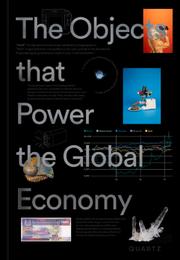 If I’m ever called on to give an acceptance speech for an award, I will credit coffee for anything I’ve managed to accomplish. I rely on three large cups a day to keep me humming along. That doesn’t sound like much of a trend line to follow for 2018, but bear with me.
If I’m ever called on to give an acceptance speech for an award, I will credit coffee for anything I’ve managed to accomplish. I rely on three large cups a day to keep me humming along. That doesn’t sound like much of a trend line to follow for 2018, but bear with me.
When I ordered a cool little book published this year by Quartz, The Objects That Power the Global Economy, I figured it wouldn’t take me long before I found a reference to conferences, and hopefully one object — out of the 10 the book showcases that are “largely invisible to the ordinary observer” yet driving transformations in the global economy — with a direct correlation to the world of business events.
After a quick skim, I settled on one: cognitive enhancers. This class of drugs has not been on my radar, but I figure if Quartz think it’s significant enough to power the global economy, I’ll be keeping my eye on it in 2018.
“Humans have always sought an extra mental edge,” the book’s authors write, “from a simple coffee on the way to work to amphetamines in the battlefield. But smart pharmaceuticals may bestow more than simple energy and focus. Modafinil, originally developed to treat sleep disturbances like narcolepsy and sleep apnea, has been shown to enhance attention, improve learning, and boost our ability to solve problems and think creatively.” Seems like the goals of every business event, no?
According to the book, scientists from the Naval Medical Research Unit subjected soldiers to mental and physical exercises over a grueling 37-hour period without sleep in 2016. Those who took modafinil performed better than those given caffeine gum.
Anders Sandberg, a philosopher at the Future of Humanity Institute at Oxford University, told the book’s authors that he once went to an academic conference where everyone at his table had tried modafinil. “When they described its effects, they were all over the place,” he said, from feeling sharper to more social.
Sandberg, who takes the “smart drug” himself, doesn’t find its stimulating effect most beneficial in the course of his everyday work — “Getting stuff done is great, but you can do that with coffee,” he said — but when he’s “listening to a philosopher or tackling a difficult problem.”
If modafinil grows in popularity, how might that affect how conference attendees experience the program — and therefore influence its design? For one, it may save on the number of coffee urns required to help attendees power through sessions. And perhaps we’ll see more attendees focused on the speakers and engaged in the conversation than distracted by their screens.
It also makes me think that having more attendees with a heightened state of mind will raise the bar in terms of the education-program quality. I’m going to ponder that over my next cup of coffee.
At Ease, Sartorially Speaking
Jasmine Zhu, Digital Editor
Between all of the stretching, green juice, and step-counting at meetings and events, it looks like it might be time to revisit dress codes. The wellness trend doesn’t seem like it’s going anywhere, and how can attendees practice yoga poses between sessions wearing three-piece suits? Stiffer, more formal dress still have a place in certain contexts, but I think it’s likely that we’ll see a trend toward more comfortable workwear overall.
For a few years, I’ve started to see more people in the workplace reflect flashes of personal taste — brightly colored polka-dot socks, fun jewelry, and funky glasses — and it’s not just us millennials. While I don’t think most people will start showing up to meetings in sweatpants, I do think we’ll see more comfortable clothing (and more at-ease attendees!). As meetings work to increase and promote diversity, I think self-expression will be increasingly celebrated. And clothing is just one facet of that.


